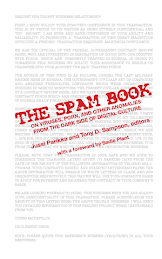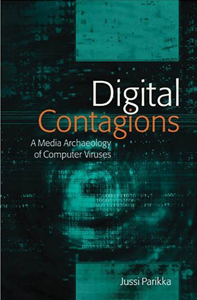I am going to attach here an abstract I submitted for a conference today -- the Deleuze studies conference in Amsterdam. Its something I did for a book coming out soonish, on Deleuze and Contemporary Art:
Can software as a non-human constellation be said to have “affects”? The talk argues that as much as we need mapping of the various affects of organic bodies-in-relation in order to understand the modes of control, power and production in the age of networks, we need a mapping of the biopolitics of software and code too. If we adopt a Deleuze-Spinozian approach to software we can focus on the body of code as a collection of algorithms to bodies interacting and affecting each other. What defines a computational event? The affects it is capable of. In a parallel sense as the tick is defined through its affects and potentials for interaction, software is not only a stable body of code, but an affordance, an affect, a potentiality for entering into relations. This marks moving from the metaphoric 1990s cyberdiscourse that adopted Deleuzian terms like the rhizome into a different regime of critique that works through immanent critique on the level of software. This talk works through software art to demonstrate the potentials in thinking software not as abstract piece of information but as processes of individuation (Simondon) and interaction (Deleuze-Spinoza). A look at software practices and discourses around net art and related fields offers a way of approaching the language of software as a stuttering of a kind (Jaromil). Here dysfunctionalities turn into tactical machines that reveal the complex networks software are embedded in. Software spreads and connects into economics, politics and logics of control society as an immanent force of information understood in the Simondonian sense. The affects of software do not interact solely on the level of programming, but act in multiscalar ecologies of media which are harnessed in various hacktivist and artist discourses concerning the politics of the Internet and software.
Encountering (only as a website though) today the Sonicity-installation project I continued thinking about this. The project turns light, humidity and other environmental data such as people into input for algorithmic sonification through MAX MSP and further to visualisation.
What intrigues me in this is the process of transformation and transposition of various sensory regimes; translations from input into data and further to sound, image, etc. This somehow connects for me to considerations of affect (bodies in relationality, a variety of heterogeneous bodies) as well as the materiality of code data as well (especially becoming sonorous, visible, and hence touching human bodies directly too). "The changing data is what affects what you see and experience. Live XML feeds are ciming from the real time sensors.. The sensors monitor temperature, sounds, noise, light, vibration, humidity, and gps. The sensor network takes a constant stream of data which is published onto an online environment where each different interface makes representations of the XML." (Sonicity-website).
Naturally, such transpositions could be connected to earlier avant-garde synaesthesia; people such as László Moholy-Nagy's explorations into the interconnectedness of sound with visual regimes is exemplary here (see Doug Kahn's Noise Water Meat, p. 92-93), especially when the point about synaesthesia not only as an aesthetic category but irreducibly laboratorial is made clear. Such synthetic processes that make us think about the interrelations of heterogeneous sensations and their sources work through the new technologies and sciences of sound and perception. Indeed, if code/sofware has affects -- that is not anymore sillier question than "I wonder how your nose will sound" (Moholy-Nagy).
Monday, 1 March 2010
Does Software have Affects, or, What Can a Digital Body of Code Do?
Labels:
Amsterdam,
avantgarde,
DeleuzeGuattari,
software studies,
the sonic
Subscribe to:
Post Comments (Atom)








No comments:
Post a Comment